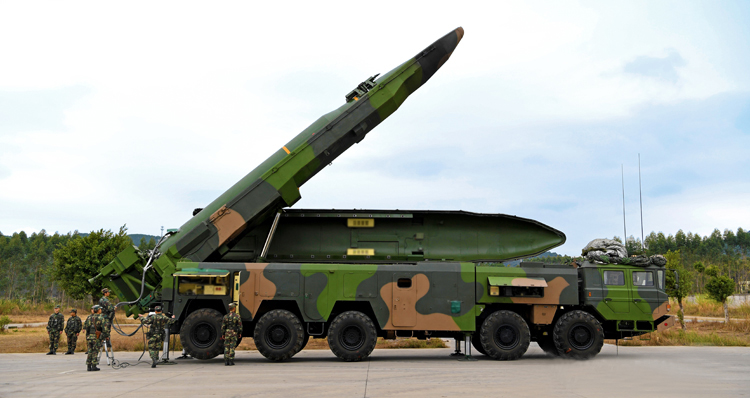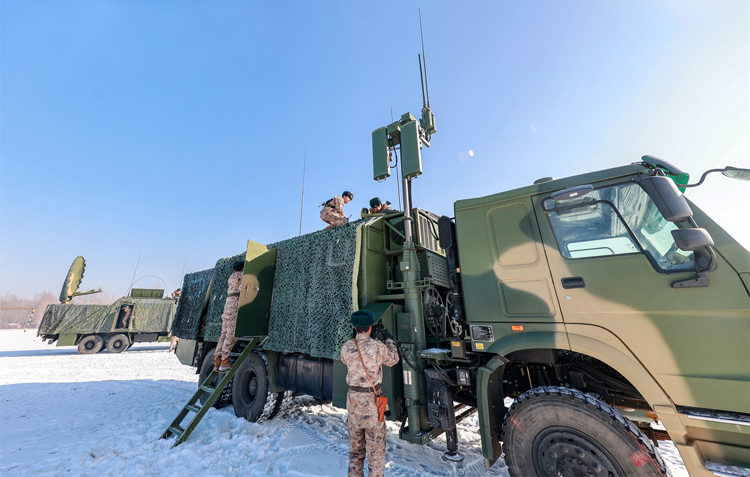INDIAN ARMED FORCES CHIEFS ON OUR RELENTLESS AND FOCUSED PUBLISHING EFFORTS

The insightful articles, inspiring narrations and analytical perspectives presented by the Editorial Team, establish an alluring connect with the reader. My compliments and best wishes to SP Guide Publications.

"Over the past 60 years, the growth of SP Guide Publications has mirrored the rising stature of Indian Navy. Its well-researched and informative magazines on Defence and Aerospace sector have served to shape an educated opinion of our military personnel, policy makers and the public alike. I wish SP's Publication team continued success, fair winds and following seas in all future endeavour!"

Since, its inception in 1964, SP Guide Publications has consistently demonstrated commitment to high-quality journalism in the aerospace and defence sectors, earning a well-deserved reputation as Asia's largest media house in this domain. I wish SP Guide Publications continued success in its pursuit of excellence.
China Breaks Up Strategic Support Force (SSF)
Recent military reforms in China include the restructuring of the People's Liberation Army (PLA), with the disbandment of the Strategic Support Force (SSF) and the establishment of three independent branches: the Information Support Force (ISF), the Cyberspace Force, and the Aerospace Force
 |
The Author is Former Director General of Information Systems and A Special Forces Veteran, Indian Army |

Xi Jinping assumed the presidency of China for the first time on March 14, 2013. Under him, Chinese military reforms, beginning 2015, witnessed slashing of 3,00,000 PLA manpower – reducing the size to 2 million, reorganisation into five Theatre Commands (Northern, Western, Central, Eastern and Southern), erstwhile Second Artillery renamed as Rocket Force, establishment of the Strategic Support Force (SSF) combining the functions of intelligence and psychological operations, technical reconnaissance, electronic warfare, cyber warfare and space warfare, and creation of a Joint Logistics Force.
Xi Jinping is considered the most powerful leader of China now (de facto Supreme Leader) after Mao Zedong; as President of the Peoples' Republic of China (PRC) since 2013, General Secretary of the Chinese Communist Party (CCP), Chairman of the Central Military Commission (CMC), plus Commander-in-Chief of the Joint Operations Command Center of the Peoples' Liberation Army (PLA) - commanding all military and paramilitary forces. Xi's political control of the military is viewed as exceeding what Mao and Deng had.
President Xi Jinping is considered the most powerful leader of China, commanding all military and paramilitary forces, exceeding the control of previous leaders like Mao Zedong and Deng Xiaoping
In another recent restructuring of the PLA on April 19, 2024, the SSF was disbanded. The PLA now has three independent branches, namely: the Information Support Force (ISF), the Cyberspace Force, and the Aerospace Force. The aim is to enhance military efficiency and political oversight, with direct CMC control over these new forces. Former SSF's functions, including cyber and space operations, are divided among the four arms, emphasising centralised command. A spokesperson of China's Ministry of National Defense (MND) described creation of the ISF for the "cause of building a strong military, and a strategic step to establish a new system of services and arms and improve the modern military force structure with Chinese characteristics."

According to Senior Colonel Wu, the ISF underpins "coordinated development and application of network information systems". This indicates, the ISF will be responsible for handling network information systems, communications support and network defence; PLA's command and control, information security, and intelligence dissemination (integrated computer architecture, including network information systems and communications support), as well as coordinating defence, maintenance and repairs of their own cyber networks.
President Xi Jinping is considered the most powerful leader of China, commanding all military and paramilitary forces, exceeding the control of previous leaders like Mao Zedong and Deng Xiaoping
PLA considers the information domain as important as the four traditional domains of air, land, sea and space. Xi has said the ISF plays "a crucial role in advancing the Chinese military's high-quality development and competitiveness in modern warfare". As such, the role of the ISF is crucial in future conflict situations where multiple domains will be contested vigorously. Powered by AI in networks, the ISF would ensure secure and more efficient coordination.
The Cyberspace Force will be responsible for offensive cyber operations, with the mission to reinforce national cyber border defence, promptly detect and counter network intrusions, and maintain national cyber sovereignty and information security, as well as intelligence collection. The Cyberspace Force essentially takes over the responsibilities of the SSF's former Network Systems Department. China's cyber attacks around the world, including in India, are well known.

The Aerospace Force will take over SSF's erstwhile Space Systems Department. The Aerospace Force will supervise space operations and space launches and strengthen the capacity to safely enter, exit, and freely use space. It will have the ability to control the space-enabled information sphere, and the ability to deny adversaries their own space-based information gathering and communication capabilities as critical components of conducting modern warfare.
The Cyberspace Force focuses on offensive cyber operations, reinforcing national cyber border defence, detecting and countering network intrusions, maintaining cyber sovereignty, and collecting intelligence
China is a major space power. China's near-space command, which will be equipped with modern hypersonic missiles to carry out "merciless" attacks on critical enemy targets, as also high-altitude surveillance globally using automated solar-powered drones and spy balloons, has been covered in these columns earlier. In addition is the weaponisation of space. The US alleges that China and Russian weaponisation of space is growing at a very fast pace.
The 'China's National Defense in the New Era' white paper of 2019 had stated PLA would evolve from "informationised" to "intelligentised" warfare through such technologies as artificial intelligence, quantum information, big data, cloud computing and the Internet of Things (IoT). With these latest reforms, the PLA now has a more streamlined force structure, comprising the PLA Army, Navy, Air Force, and the Rocket Force, the Information Support Force (ISF), the Cyberspace Force, and the Aerospace Force. Xi has aimed to improve PLA's operational efficiency and strengthen political oversight over the military. Of interest would be 2027, the Chinese military's centenary, which Xi has set as the deadline for the PLA to achieve its interim modernisation goals.

India established the tri-service Andaman and Nicobar Command (ANC) in 2001, Strategic Forces Command (SFC) in 2003, Armed Forces Special Operations Division (AFSOD), Defence Cyber Agency (DCyA) and the Defence Space Agency (DSA) in 2019. The proposal of an Air Defence Command was deliberated and abandoned. The setting up of Theatre Commands (TCs) have been under discussion over the past few years, which had gathered pace when the first Chief of Defence Staff was appointed by India in December 2019. Mercifully, hasty decisions for political gains are avoided considering available resources and pros and cons of centralised reserves vis-à-vis what should be integral to individual TCs.
The Aerospace Force supervises space operations, strengthens space capabilities, controls the space-enabled information sphere, and denies adversaries their space-based information gathering and communication capabilities
Finally, the latest PLA reforms by Xi Jinping have been made obviously after comprehensive study of recent conflicts, especially the US-led war on Russia using Ukraine as the proxy; a strategic move to refine the PLA structures with special emphasis on battle-space information control in a multi-domain integrated joint operations environment, keeping in mind future security challenges and technological advancements.
China, being India's primary adversary, we must acknowledge that China's latest military reforms are aligned with the evolving nature of modern warfare and the need to speedily enhance capabilities in emerging domains of space, cyber, and information warfare. We must also acknowledge that China is working on global domination and views the US as its main adversary, India being a side issue. Ironically, India's focus today is to talk of our glorious heritage and learning from our historical past for political gains. But, this militates against the requirement of combating future wars, for which we must prepare in real earnest.





